
Exhibition puts ‘forgotten’ part of the Silk Road in the spotlight
The story of the iconic Silk Road is often told from the Chinese perspective. An exhibition at Oude UB focuses on the inhabitants and monuments of historical cities in Central Asia, a neglected part of the Silk Road. From 5 September to 17 October.

The Silk Road was a network of thousands of kilometres of caravan routes that, from classical antiquity, made trade possible between the eastern world (with China usually considered to be the beginning) and Europe. These trade networks meant that travellers and inhabitants came into contact with one another’s religions and cultures.
Antique photos
The exhibition takes the visitor to historical places in Central Asia, from the last quarter of the 19th century to the 1970s. Antique photos, postcards and prints show impressive monuments such as mosques and mausoleums in Afghanistan, Iran, Kazakhstan, Turkmenistan and Uzbekistan.
Mosques and mausoleums
The old photos, postcards and prints come from the private collection of Leiden researcher Elena Paskaleva. A lecturer in Critical Heritage Studies, Paskaleva researches the material culture of Central Asia with the aid of material such as this, which she purchases from second-hand bookshops and collectors. Paskaleva: ‘The photos show the monuments in consecutive decades, which makes it easy to see how the mosques, mausoleums and their environment change over the course of time.’ The first photos of the area date from 1868 and are thus the oldest photographic images of Central Asia. Paskleva developed the exhibition together with Gabrielle van den Berg, Professor of Cultural History of Iran and Central Asia.

Spotlight on Central Asia
The story of the iconic Silk Road is often told from the Chinese perspective. The two curators emphasise that they want to add some nuance with this exhibition. Van den Berg: ‘We consciously focus on the cities and not on the nation states that they belong to.’ The idea of the Silk Road comes from German traveller Ferdinand von Richthofen, who coined the term in 1877. There had always been exchanges, however. Paskaleva: ‘There is often a one-sided focus on China or on the Middle East. But Central Asia definitely wasn’t only a transit route for China and the West. This area has a very rich history and thus deserves attention.’

Missing link
Van den Berg and Paskaleva launched the Central Asia Initiative in 2015 to promote the study of Central Asia in the Netherlands and Europe. Van den Berg: ‘In Leiden, East and South-East Asia and the Middle East receive plenty of attention. The area in between is the missing link that we want to draw attention to, in lectures and classes.’
The initiative was initially funded by the Asian Modernities and Traditions research profile in Leiden, and is now funded by the LUCIS programme Islam in Central Asia. The researchers are working together in the NWO project Turks, Texts and Territory: Imperial Ideology and Cultural Production in Central Eurasia.
The exhibition was officially opened on 5 September by the ambassador of Uzbekistan, Dilyor Khakimov. Especially for the opening, the head chef of the embassy prepared several traditional Uzbek dishes. The online catalogue of the exhibition is available here.
-
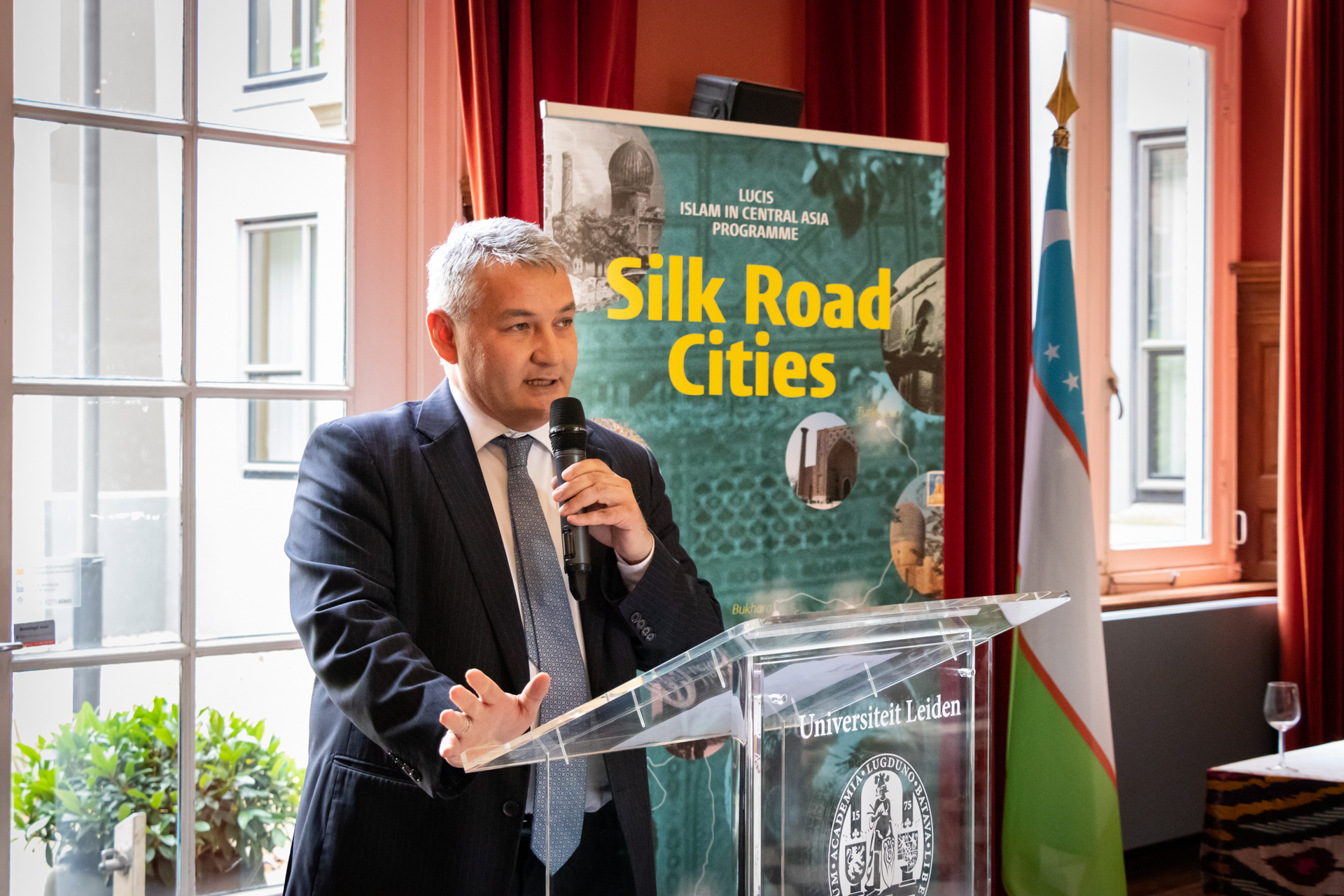
Dilyor Khakimov, the ambassador of Uzbekistan, opened the exhibition Silk Road Cities. -
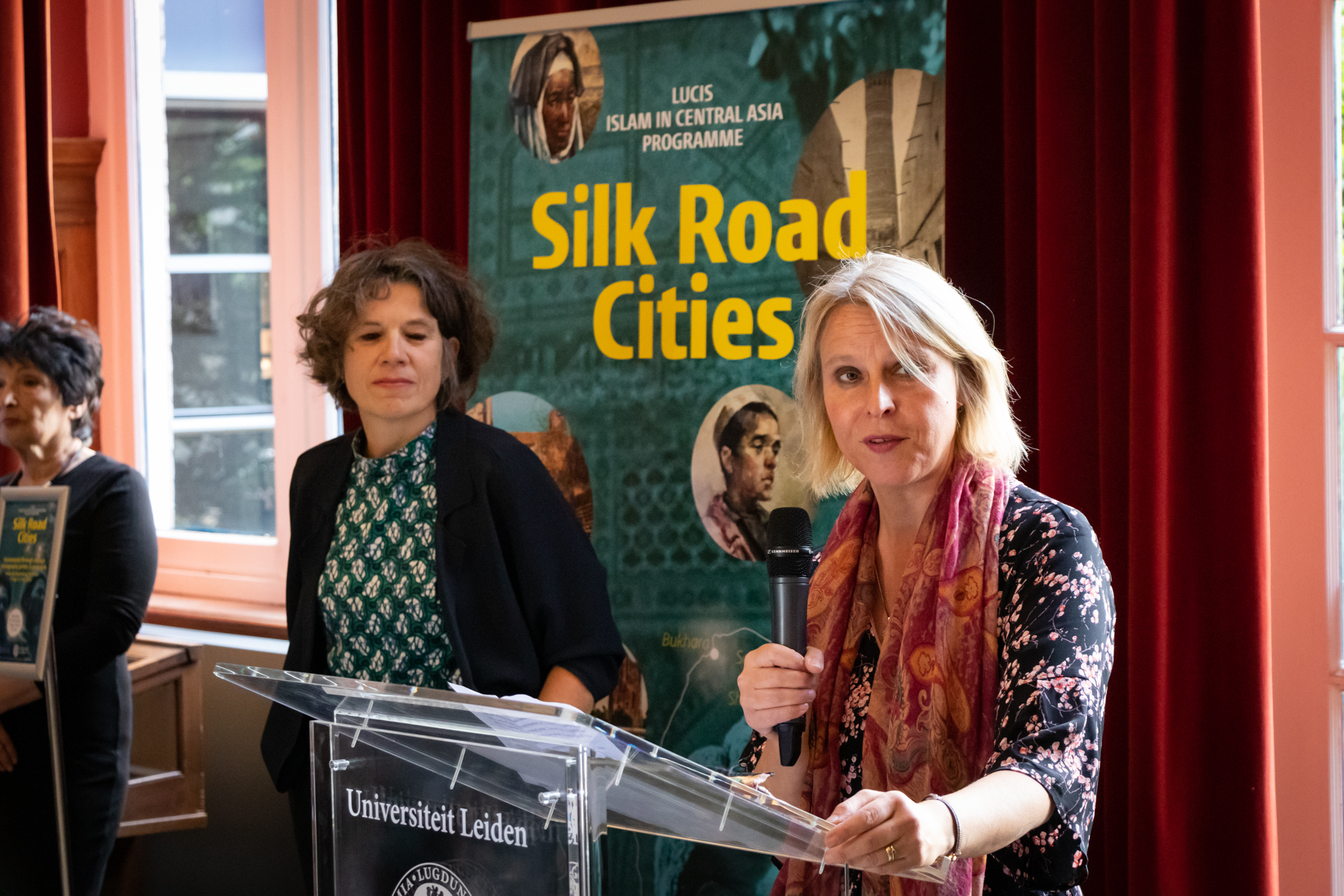
Professor of Cultural History of Iran and Central Asia Gabrielle van den Berg discussed the background of the collection on display. -
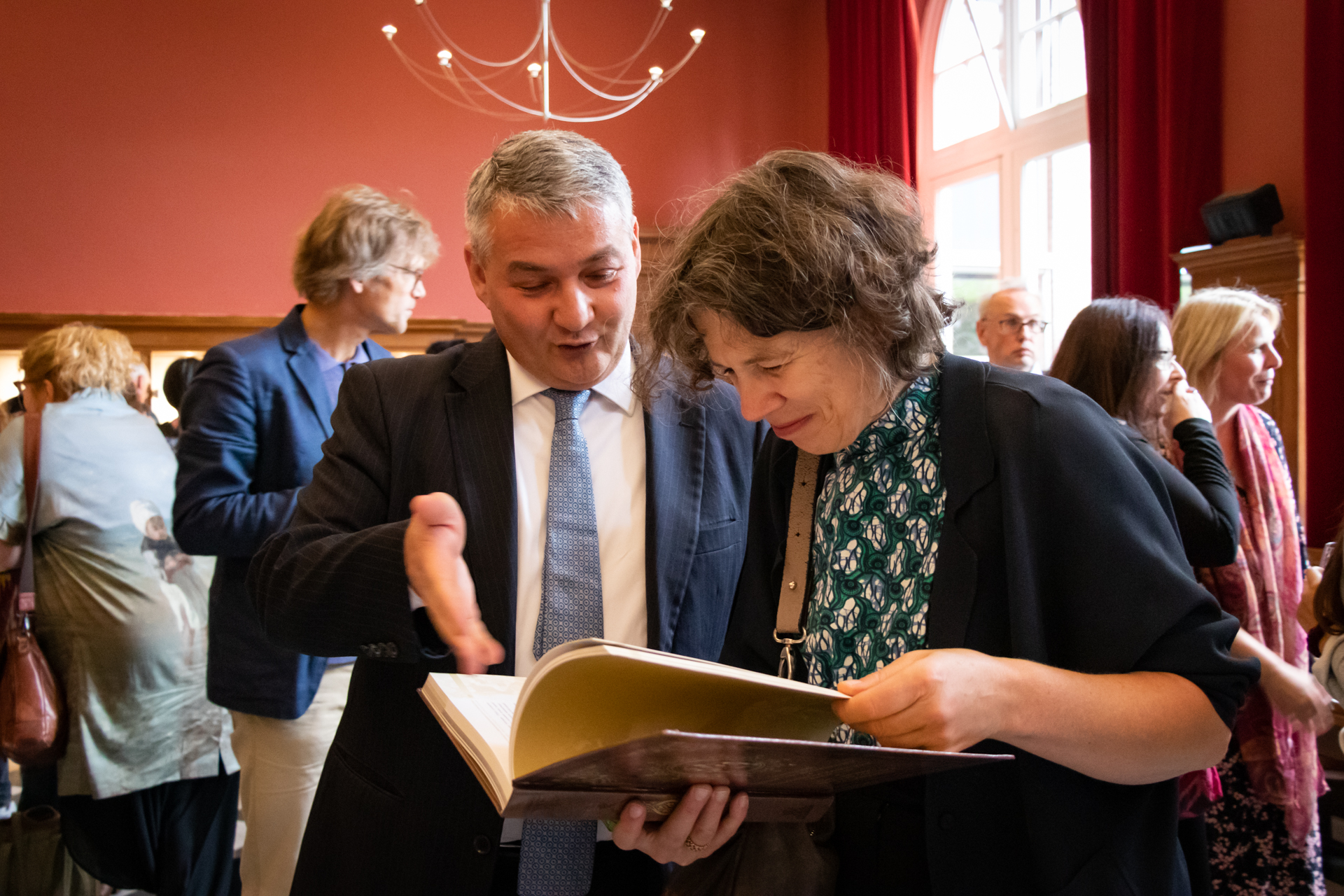
Ambassador Khazimov and LUCIS director Nathal Dessing discuss a book about the exhibition. -
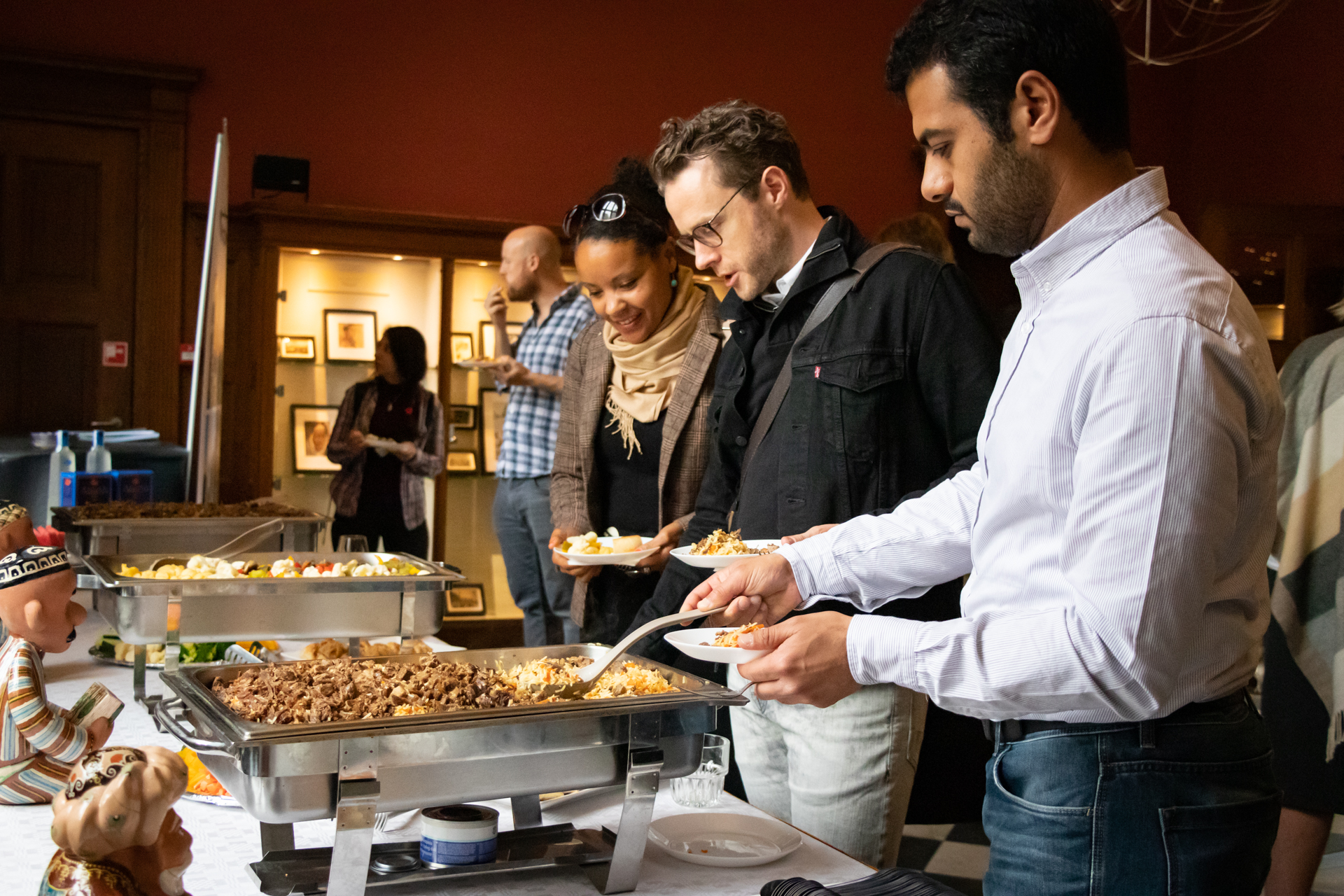
The head chef of the embassy prepared several traditional Uzbek dishes. -
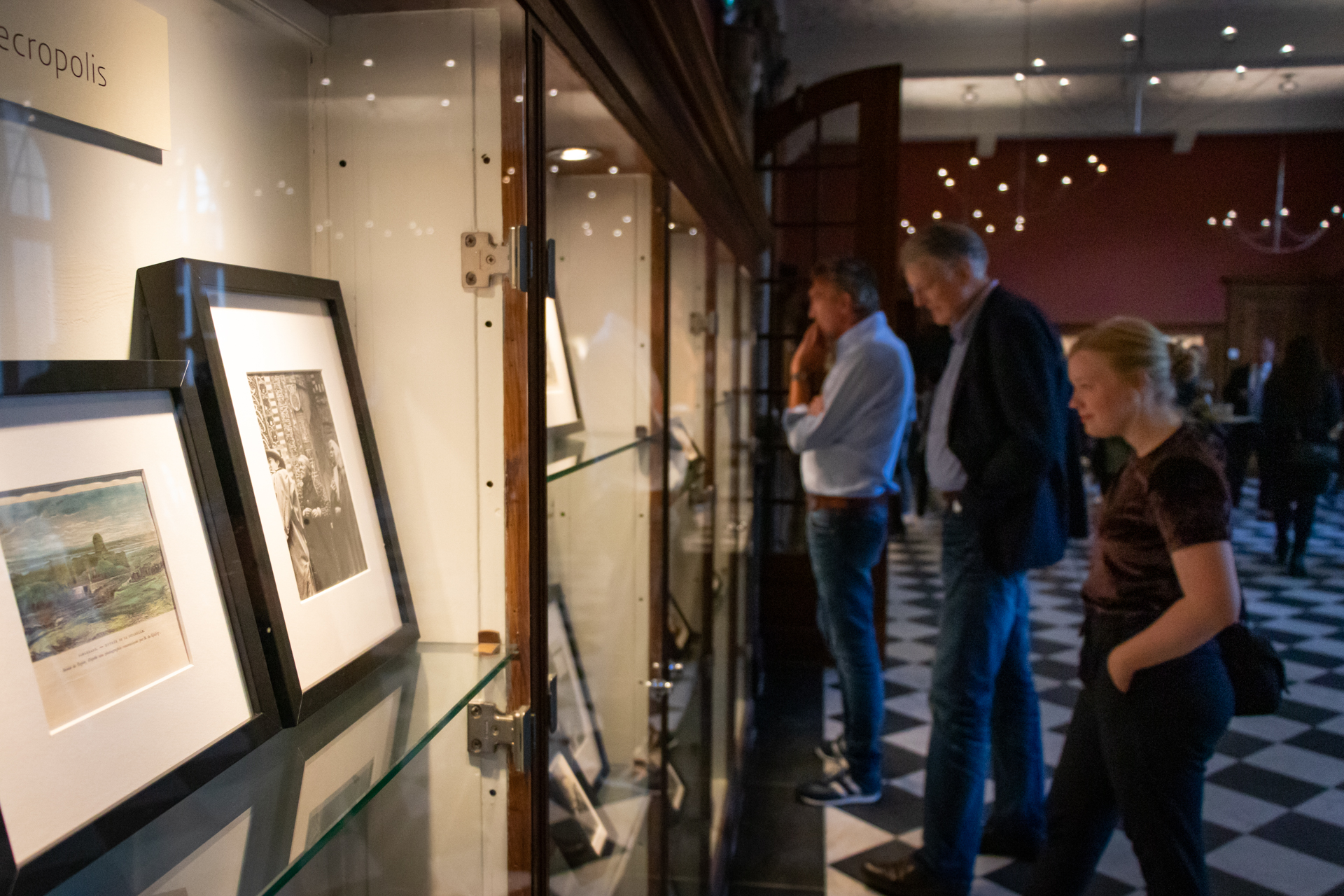
Visitors admired the many photographs and drawings, that show the splendour of the Central Asian cities along the Silk Road.
